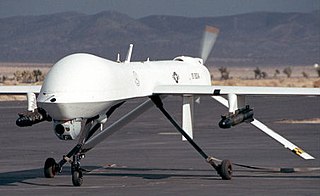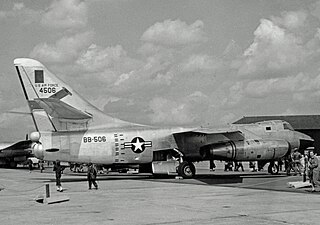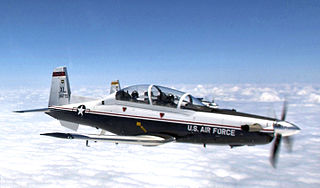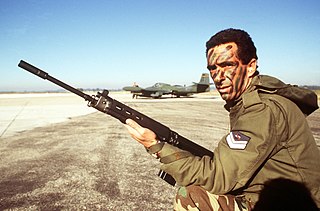
The 70th Intelligence, Surveillance and Reconnaissance Wing is a United States Air Force unit assigned to the 16th Air Force. It is stationed at Fort George G. Meade, Maryland.

The 363rd Intelligence, Surveillance, and Reconnaissance Group is a United States Air Force unit stationed at Joint Base Langley-Eustis. It is assigned to the 363rd Intelligence, Surveillance and Reconnaissance Wing. It was activated in February 2015, after having been returned to regular service after operating as a provisional unit. The group has its origins in the 363rd Fighter Group, activated on 1 August 1943 at Hamilton Field, California. The unit was credited with 41 victories but lost 43 of its own aircraft during World War II.

The 67th Cyberspace Operations Group is a unit of the 67th Cyberspace Wing. Headquartered on Kelly Field Annex's Security Hill, the group is an Air Force information operations unit.

The 11th Attack Squadron is a United States Air Force unit assigned to the 432d Wing Air Combat Command at Creech Air Force Base near Indian Springs, Nevada. It flies General Atomics MQ-9 Reaper Unmanned aerial vehicles. In 1995 the 11th became the first Remotely Piloted Aircraft (RPA) squadron in the Air Force.

The 460th Wing is an inactive wing of the United States Air Force. The 460th Space Wing was activated on 1 October 2001, replacing the 821st Space Group. It was inactivated on 24 July 2020 and replaced by the Buckley Garrison.

The 20th Intelligence Squadron is a United States Air Force unit, assigned to the 363d Intelligence, Surveillance, and Reconnaissance Group at Offutt Air Force Base, Nebraska. It has served at Offutt since June 1992, when it was activated as the 20th Air Intelligence Squadron.

The 16th Airborne Command and Control Squadron was a United States Air Force squadron assigned to Air Combat Command's 461st Air Control Wing, 461st Operations Group, stationed at Robins Air Force Base, Georgia. The squadron previously flew the Northrop Grumman E-8C JSTARS, providing airborne battle management, command and control, surveillance, and target acquisition with the last E-8C flight on September 8, 2022.

The 363rd Intelligence, Surveillance and Reconnaissance Wing is a United States Air Force unit. The group is assigned to the United States Air Force Sixteenth Air Force, stationed at Joint Base Langley-Eustis, Virginia.

The 18th Attack Squadron is a squadron of the United States Air Force. It is assigned to the 432d Operations Group, and has been stationed at Creech Air Force Base, Nevada since 2009. The squadron conducts strike, intelligence, surveillance and reconnaissance missions, operating the General Atomics MQ-1 Predator unmanned aerial vehicle.

The 19th Electronic Warfare Squadron is an active United States Air Force unit, stationed in Bann, Germany as part of the United States Air Forces in Europe Warrior Preparation Center. It was first activated during World War II as the 19th Photographic Mapping Squadron. During the war, the squadron remained in the United States and mapped areas of North America. However, starting in 1944, the air echelon of the squadron deployed to North Africa to map that area. After V-E Day, the squadron moved to England and mapped large areas of Europe until October 1945, when it began to stand down for inactivation. It was briefly active in the reserve from 1947 to 1949 as the 19th Reconnaissance Squadron.

The 25th Attack Group is an active United States Air Force unit, stationed at Shaw Air Force Base, South Carolina. It was activated in February 2018 as a geographically separate unit to operate unmanned aerial vehicles and is assigned to the 432d Wing, which is located at Creech Air Force Base, Nevada. As of 2020, the group manages five General Atomics MQ-9 Reaper attack squadrons, as well as the 25th Operations Support Squadron, which provides intelligence, weather, and administrative support.

The 85th Flying Training Squadron is part of the 47th Flying Training Wing based at Laughlin Air Force Base, Texas. It operates Beechcraft T-6 Texan II aircraft conducting flight training.

The 460th Test and Evaluation Squadron is an active United States Air Force unit. It was previously assigned to Tactical Air Command's 325th Fighter Weapons Wing at Tyndall Air Force Base, Florida, where it was inactivated on 15 October 1982. On 11 August 2023, it was reactivated and assigned to the 926th Operations Group, 926th Wing at Nellias AFB, Nevada.

The 401st Air Expeditionary Group is a provisional United States Air Force unit assigned to United States Air Forces in Europe to be activated or inactivated at any time as needed. It is stationed at Ramstein Air Base, Germany.

The United States Air Force's 10th Intelligence Support Squadron is an intelligence unit located at Langley Air Force Base, Virginia.

The 29th Attack Squadron is a remotely piloted vehicle training unit of the United States Air Force. Assigned to the 49th Operations Group, 49th Wing at Holloman Air Force Base, New Mexico. Flying the General Atomics MQ-9 Reaper. It was activated on 23 October 2009.

The 26th Intelligence Squadron is an intelligence organization of the United States Air Force, located at Buckley Space Force Base, Colorado.

The 62d Expeditionary Attack Squadron is a provisional United States Air Force unit. It is a provisional squadron of Air Combat Command, attached to the 432d Air Expeditionary Operations Group, stationed at Creech Air Force Base, Nevada. The primary mission of the 62d EATKS is to launch and recover all the Air Force Remotely Piloted Aircraft in Afghanistan.

The 84th Bombardment Squadron is an inactive United States Air Force unit. It was last assigned to the post-World War II-era 47th Bombardment Wing, stationed at RAF Sculthorpe, England. It was inactivated on 22 June 1962.

The 24th Tactical Air Support Squadron was a ground attack squadron of the United States Air Force. It was last active at Nellis Air Force Base in Nevada, prior to being inactivated during December 2020.





























